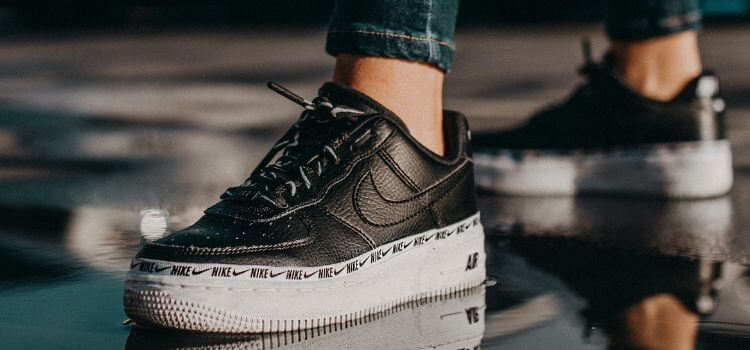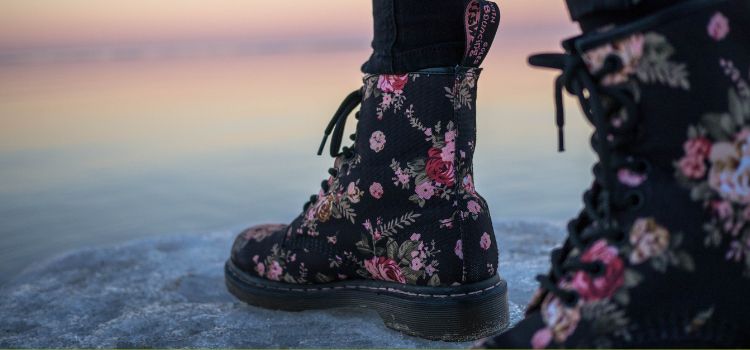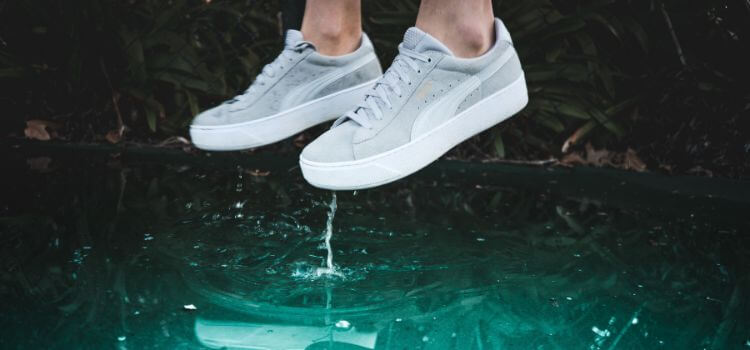As an Amazon Associate, I earn from qualifying purchases
When it comes to keeping your feet dry in wet weather, the right footwear can make all the difference. In this guide, we’ll delve into the world of waterproofing shoes using wax. Whether you’re a hiking enthusiast or just want to protect your everyday shoes from the elements, wax waterproofing is a cost-effective and efficient solution.
Why Waterproof Your Shoes?

Waterproofing your shoes is crucial for preventing discomfort and potential damage. It shields your footwear from water, maintaining its integrity and protecting against issues like mold. This process ensures a longer lifespan for your shoes and a dry, comfortable experience, especially in wet conditions.
Different Waterproofing Methods
1. Wax: An Effective Shield
Wax waterproofing has become increasingly popular due to its simplicity and effectiveness. It creates a protective barrier on your shoes, repelling water and maintaining breathability.
2. Benefits of Wax Waterproofing
- Enhanced Water Resistance: The primary goal of waterproofing is is to keep your feet dry in various conditions.
- Breathability is Maintained: Unlike some other waterproofing methods, wax doesn’t compromise the breathability of your shoes.
- Suitable for Various Materials: Whether your shoes are made of leather or synthetic materials, wax waterproofing is versatile.
- Cost-Effective: In comparison to high-tech alternatives, wax is a budget-friendly option.
Choosing the Right Wax

Selecting the right wax is a critical step in ensuring effective shoe waterproofing. Beeswax and paraffin wax are common choices, each with unique advantages. Beeswax, a natural option, is excellent for leather shoes, providing a protective coating while retaining the material’s natural qualities.
On the other hand, paraffin wax is suitable for synthetic materials, offering reliable water resistance. Consider the specific needs of your shoes and the desired level of protection when choosing the wax. The right choice ensures a lasting barrier against moisture, keeping your footwear in optimal condition.
Step-by-Step Guide: How to Waterproof Shoes with Wax
1. Cleaning the Shoes
Before applying wax, ensure your shoes are clean and dry. Remove any dirt or debris, as these can compromise the effectiveness of the waterproofing process.
2. Selecting the Wax
Choose a wax that suits your shoe material. Beeswax and paraffin are common choices. Some products come in convenient forms, like sticks or sprays, making the application process more manageable.
3. Applying the Wax
Using a clean cloth or brush, apply the wax evenly over the entire shoe surface. Pay special attention to seams and stitches, as these areas are more susceptible to water penetration.
4. Drying Process
Allow the wax to dry thoroughly. The drying time may vary depending on the type of wax used. If you’re in a hurry, a hairdryer on low heat can expedite the process.
Common Mistakes to Avoid
- Excessive Wax Application: Applying too much wax can leave a sticky residue on your shoes. A thin, even coat is sufficient.
- Neglecting Cleaning: Skipping the cleaning step can hinder the effectiveness of the waterproofing. Clean, dry shoes ensure better adhesion to the wax.
- Using the Wrong Wax: Different shoes require different waxes. Using the wrong type may not provide adequate protection.
Testing the Waterproofing

Testing the waterproofing of your treated shoes is a vital step in ensuring their effectiveness. After applying the wax, expose your shoes to water and observe if it beads up and rolls off. A successful test indicates that the waterproofing is working and that your shoes are adequately protected.
If the water doesn’t bead up, consider reapplying the wax to enhance the water resistance. This simple yet essential test assures that your footwear is ready to repel water and keep your feet dry in various conditions.
Long-Term Maintenance
Long-term maintenance is key to preserving the effectiveness of your shoe’s waterproofing. Regularly reapply wax, especially after prolonged use or exposure to harsh weather conditions. This practice ensures a continued protective barrier against water.
Additionally, routine cleaning and conditioning contribute to the overall longevity of the treatment, preventing the buildup of dirt and maintaining the breathability of your shoes. Consistent care not only extends the life of your footwear but also guarantees reliable water resistance, keeping your feet dry over the long haul.
Advantages of DIY Waterproofing
Embracing a do-it-yourself (DIY) approach to waterproofing your shoes offers several advantages. Firstly, it allows you to save money by avoiding the cost of professional services. DIY waterproofing also provides a customized solution tailored to your specific needs, ensuring that you have control over the amount of wax applied. This hands-on approach enables you to focus on high-impact areas, such as seams and stitches, ensuring thorough coverage.
Additionally, DIY waterproofing fosters a deeper connection with your footwear as you actively engage in the care and maintenance process. Overall, the advantages of DIY waterproofing include cost-effectiveness, customization, and a sense of personal involvement in preserving your shoes.
Environmental Impact

Opting for wax waterproofing has positive environmental implications. Natural waxes, such as beeswax, contribute to eco-friendliness by eliminating the need for disposable, single-use waterproofing products. Choosing this method reduces waste and promotes sustainability, aligning with environmentally conscious practices.
The process involves minimal environmental impact as it avoids the use of chemicals present in some synthetic waterproofing agents. By selecting natural wax options and embracing a greener footprint, individuals can make eco-friendly choices in preserving their footwear while minimizing harm to the environment.
Popular Brands for Wax Waterproofing
Several popular brands stand out for their high-quality wax waterproofing products. Nikwax is widely recognized for its effective and environmentally friendly options, offering specialized solutions for various materials. Otter Wax is praised for its all-natural and handmade waxes, catering to those who prioritize organic choices. Another reputable brand is Sno-Seal, known for its beeswax-based formulations, which provide durable and long-lasting waterproofing.
Grangers, with its heritage dating back to 1937, continues to be a trusted name in the industry, offering a range of high-performance waterproofing solutions. These brands have garnered positive reviews, reflecting their commitment to delivering reliable and effective wax waterproofing products for diverse footwear needs.
Conclusion
Waterproofing shoes with wax is a practical and budget-friendly solution to keep your feet dry and extend the life of your footwear. By following the step-by-step guide and avoiding common mistakes, you can enjoy comfortable, weather-resistant shoes for various activities.
FAQs about Wax Waterproofing
- How often should I wax my shoes?
- The frequency depends on usage. In general, consider waxing every few months or after significant wear.
- Can I use any type of wax for waterproofing?
- Choose the wax based on your shoe material; beeswax is great for leather, while paraffin suits synthetic materials.
- Is wax waterproofing suitable for all types of shoes?
- Yes, wax waterproofing is versatile and works well on various shoe types.
- Can I reapply wax if my shoes get wet?
- Reapply wax after exposure to water to maintain optimal waterproofing.
- Are there any downsides to wax waterproofing?
- Overuse can lead to sticky residue; moderation is key for effective results.
As an Amazon Associate, I earn from qualifying purchases

Leave a Reply